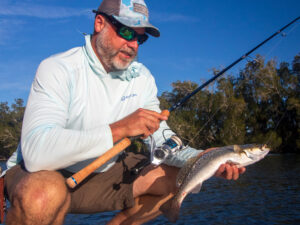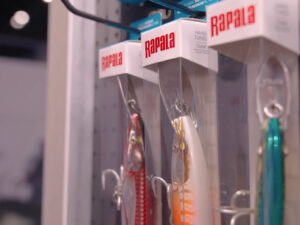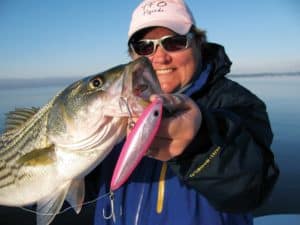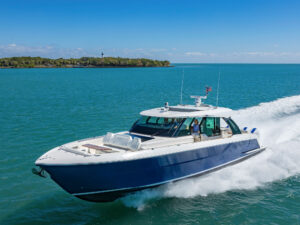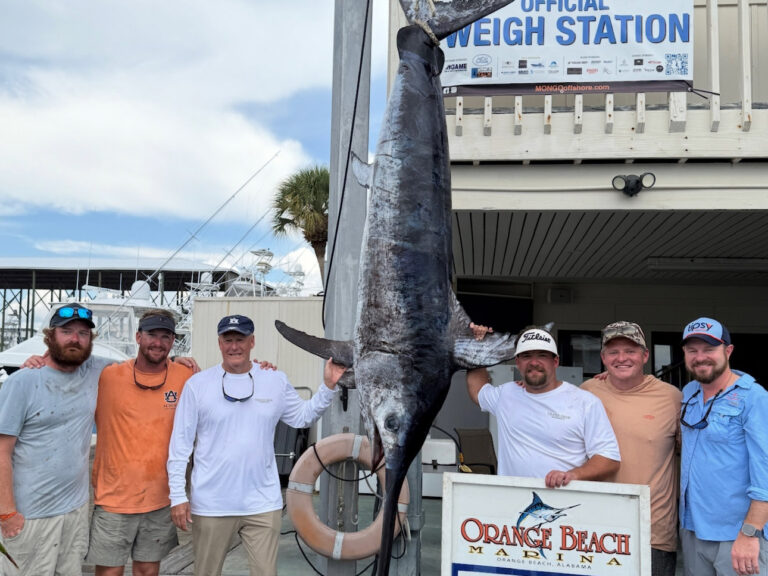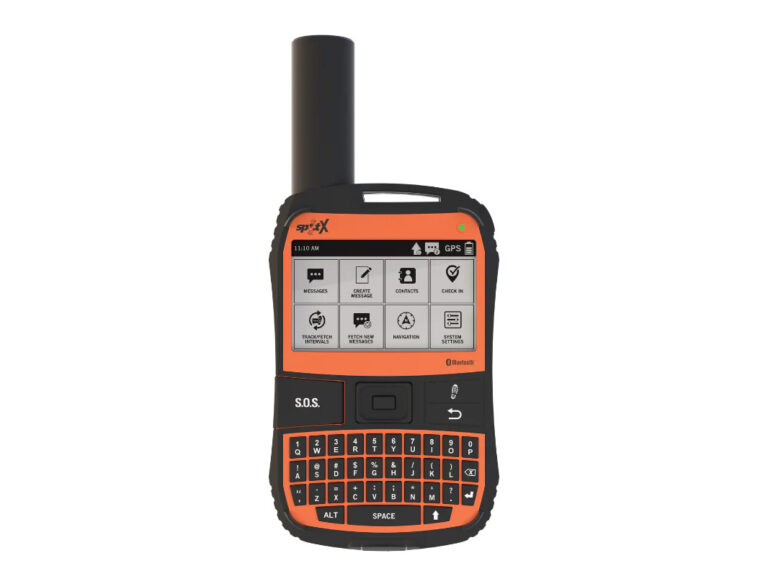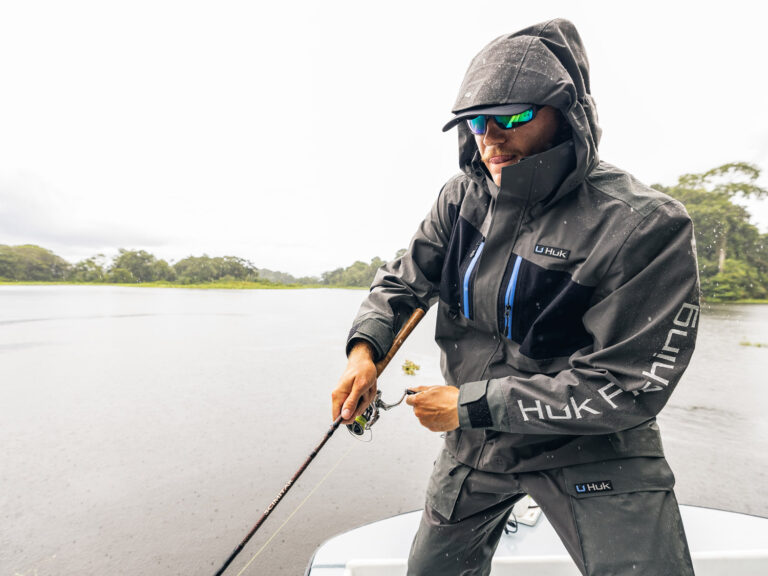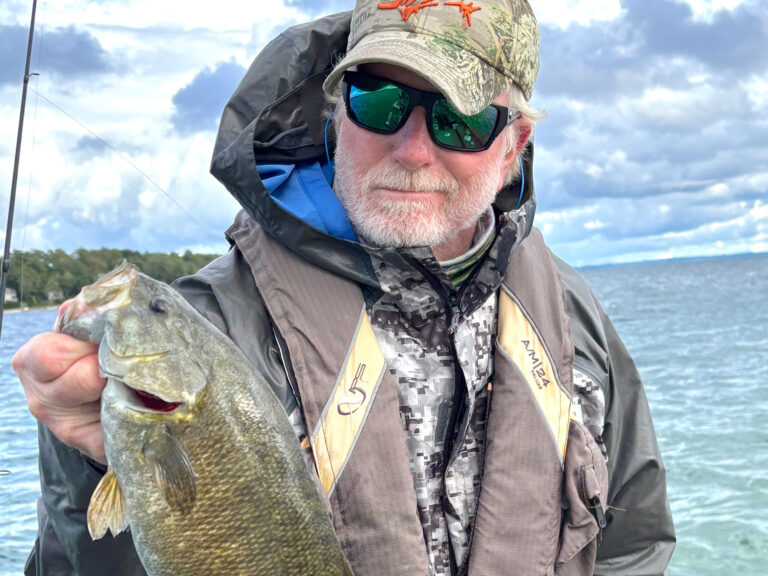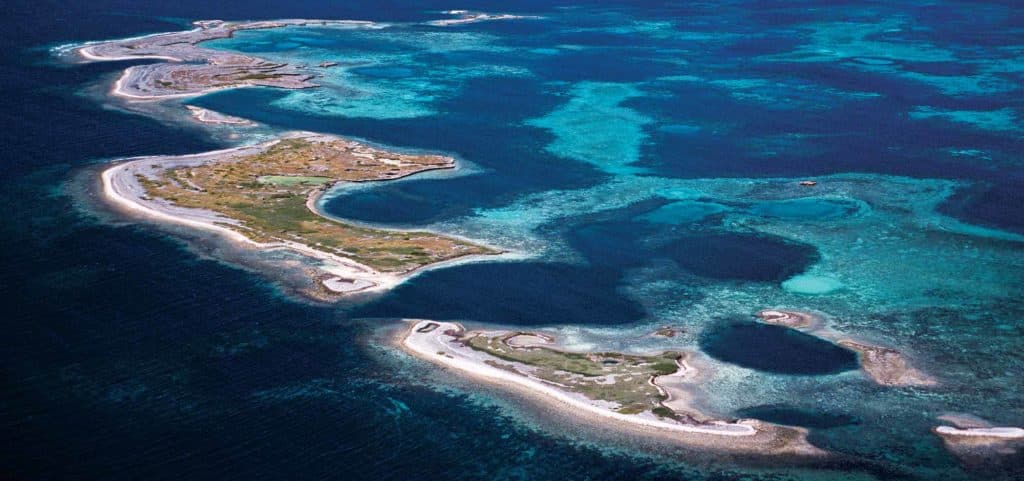
The quality of fishing must be noteworthy for anglers to venture into these islands — and they do — where winds often sweep in with gale-force intensity, where there are no accommodations or facilities of any sort, and where the nearest port is the Western Australia coastal community of Geraldton (roughly between Perth and Exmouth), more than 40 miles across the Indian Ocean.
The Abrolhos are in fact unusual in many respects, including their geography, at a confluence of tropical waters from the north and a cooler flow sweeping up from the south. The islands are home to the most southerly significant coral reefs in the Indian Ocean.
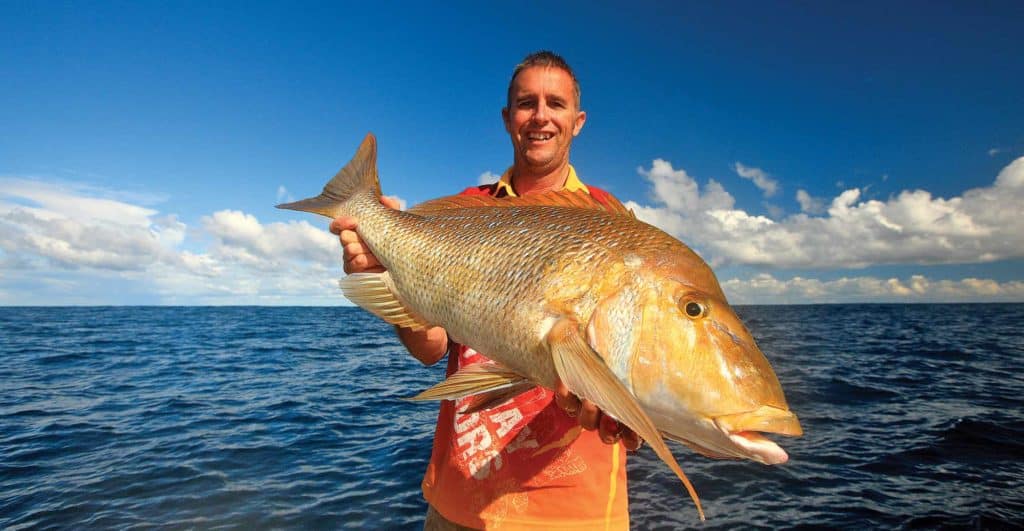
Entering the Islands
“Why don’t you try fishing the Abrolhos Islands with us?” Ben Patrick, who oversees Australia’s iconic Halco Fishing Lures, suggested. “I think you’d find it really interesting.”
I’m always eager to share discoveries of new fishing grounds, and this opportunity sounded like it would certainly fill that bill.
So nearly a year later, I touched down in Perth on a Cathay Pacific flight out of Hong Kong early on a Sunday morning in March, after a long journey starting in Florida. Before I could blink, let alone nap, I was buckling up in a Toyota Land Cruiser with Tim Carter, Patrick’s colleague at Halco. Also on board for the 4½-hour drive north to Geraldton: Scott Thomas (editor of Australia’s Fishing World magazine) and a Halco pro staffer, Curtis Waterman.
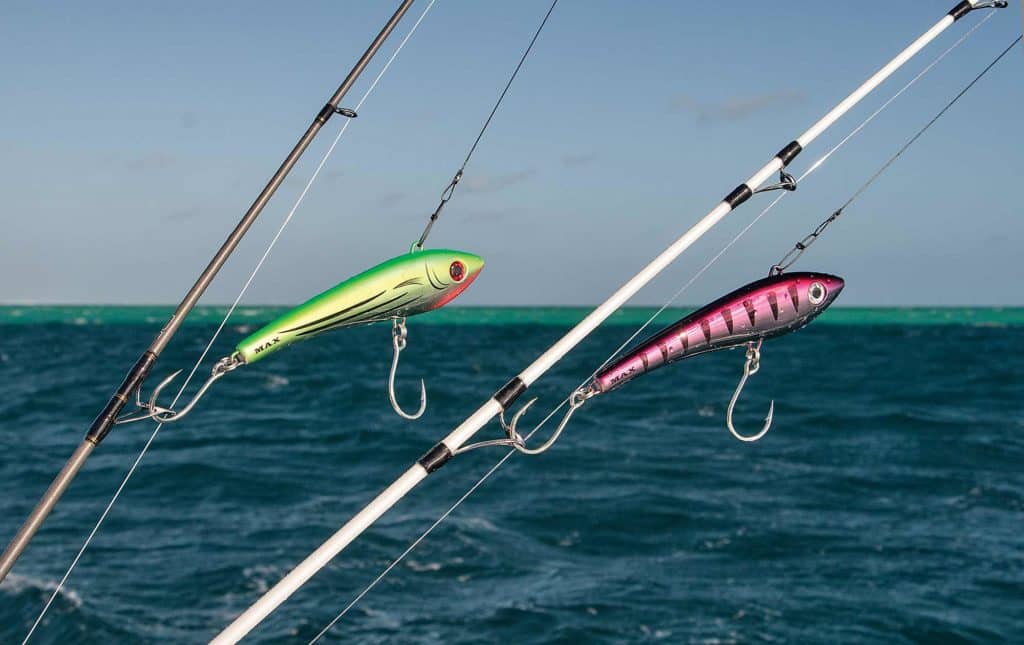
There, Patrick waited aboard his 48-foot custom sport-fisher, Mandalay. We loaded up more gear and supplies, and cast off to start the run to Middle Island in the southern group of the Abrolhos. The cruise seemed longer than the two hours it actually took us, thanks to 25-knot headwinds most of the way.
It seemed clear that we’d have heavy winds the next day — our first fishing day. But with several days in total, I figured we’d have at least one day with conditions that would give us the chance to really fish the Abrolhos.
In any case, our anchorage was protected and secure. (Patrick pointed out that we sat very close to one of many historic wrecks, in this case a ship that sunk on Half Moon Reef in 1726.) The four of us enjoyed a good meal with wine and beer on Mandalay — since any vessel visiting these islands on more than a day trip must be a liveaboard and completely self-contained — and went to bed early.
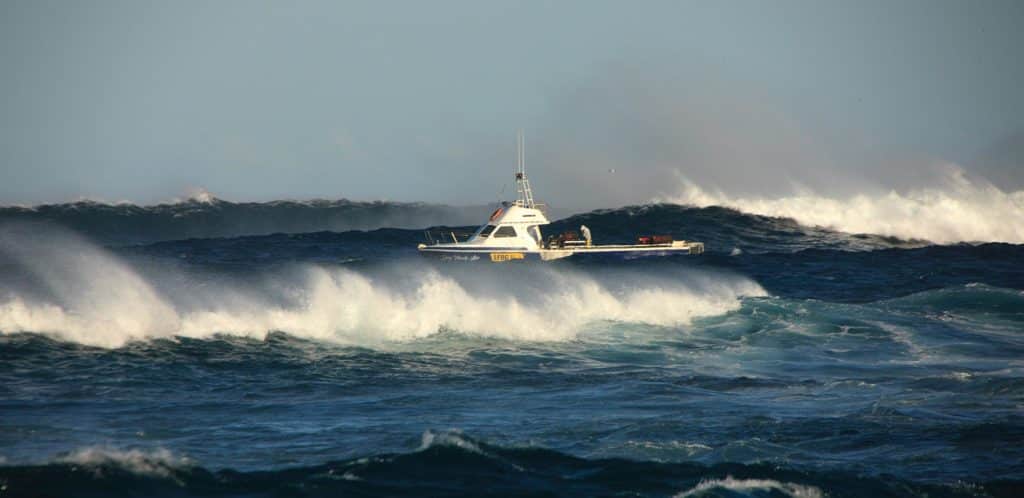
Baldies and Spaniards
The morning promised no letup in the breeze, with the wind whipping even the inside waters into a ferocious little chop despite the limited fetch. But we’d come to fish, and fish we would.
Though the blow had rendered most of Patrick’s favorite and proven areas unfishable, he piloted Mandalay to some clear shallows (in 20 to 80 feet of water) that offered a respite from the blow, where we could drift comfortably.
Read Next: Australia’s Coral Coast
We cast Halco Madeye soft plastics on jig heads and quickly began connecting, not with anything particularly large but fun fish on light gear — feisty coral trout, emperors and snapper. (Note that these snapper — very popular among anglers in the temperate waters of southern Australia and northern New Zealand — are actually a large, tough-fighting and tasty species of porgy.)
A few fish into the morning, something slammed my pearl Madeye Paddle Prawn and put a serious bend in my spinning rod. It proved to be a bit larger (at 12 to 14 pounds) than other fish we’d caught, and a lot angrier.
“Nice baldie!” announced Carter.

Southwestern Australia anglers consider the tough, tasty baldchin groper something of a prize. Despite its name, it’s in fact a wrasse — closely related to wrasses popular among U.S. anglers (none of which are called wrasses either): tautog, hogfish and California sheephead.
A bit later, we nosed out a bit into more open, deeper water despite the rugged sea awaiting us there. In short order, we hooked a couple of narrow-barred mackerel of 30 pounds or so and another that had to be 40-plus, trolling a Halco Max 190. Think king mackerel, though I find these kingfish cousins (known as “Spaniards” Down Under) a bit wilder on the hook and tastier on the plate. On a somewhat calmer day, we might have realized a wide-open bite from these schooling predators here.
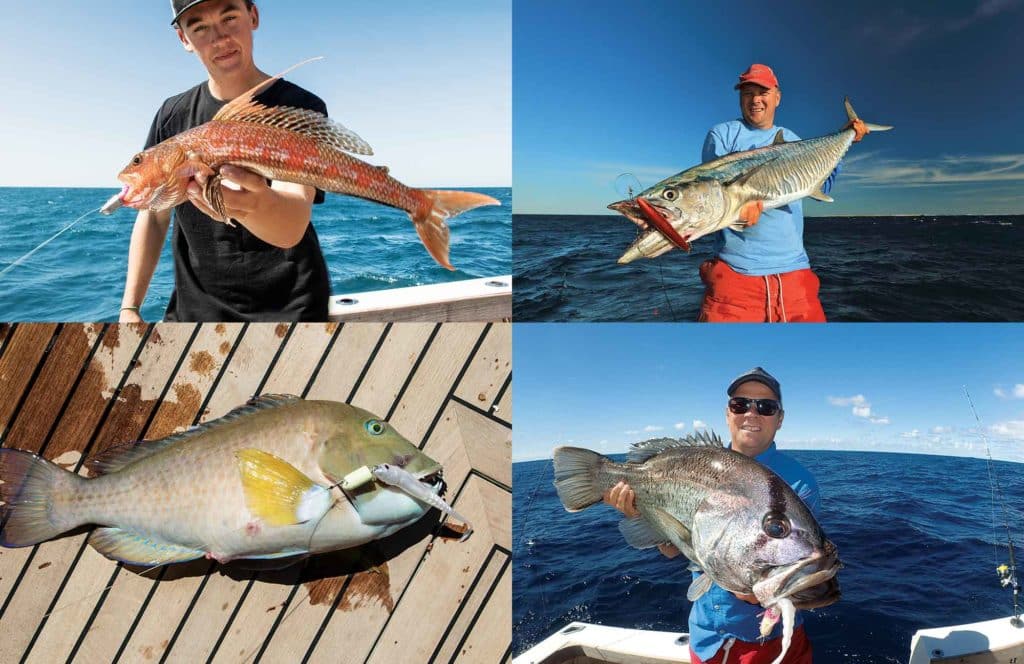
Murder on Morning Reef
Back at a quiet anchorage that evening, in the cockpit, we enjoyed a meal of fresh fish with a side of Abrolhos history, courtesy of Patrick, who has been coming to these remote islands for many years — since he was 8 years old — often for many weeks at a stretch. At times, Patrick’s kids even attended school on the islands (back when there was a school), while the family lived on the boat.
Today, the Abrolhos are mostly uninhabited beyond a few dozen commercial fishermen targeting western rock lobster until an annual quota fills. The austere terrain and its lack of fresh water, plus a law prohibiting camping, mean that anyone overnighting must stay on a boat. (Limited camping might be allowed in the future.) However, one can enjoy a cold one at the pub on Pigeon Island, as we did.
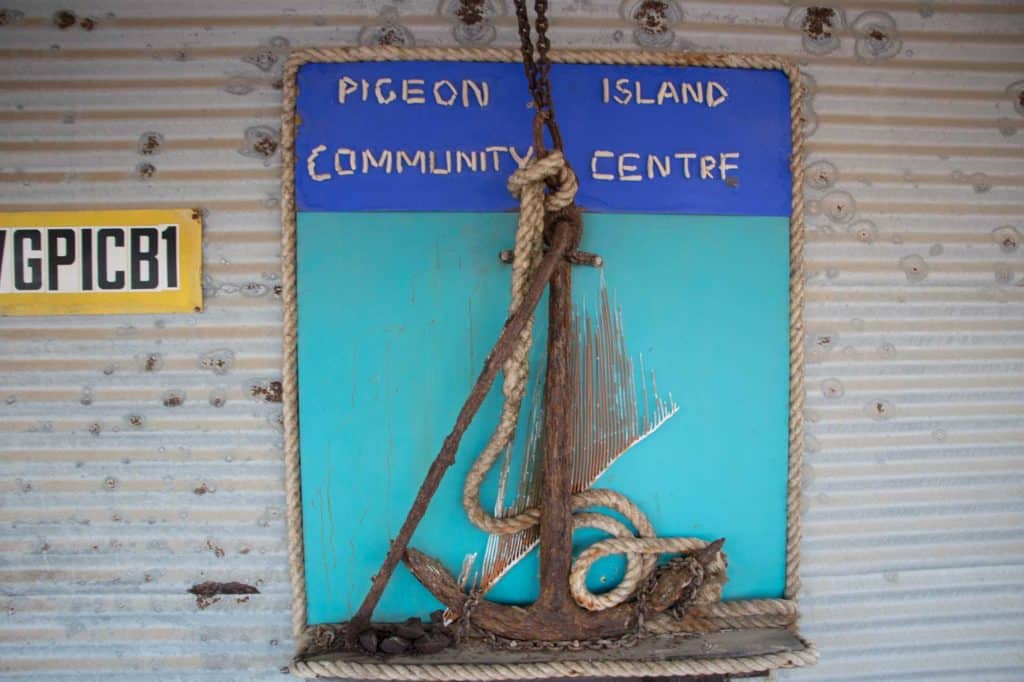
Besides lobster, the Abrolhos are best known for shipwrecks; throughout recorded (and particularly pre-GPS) history, the treacherous reefs that punctuate these waters have taken a great toll on ships — none better known than the Batavia.
The Dutch East India Co. vessel ran aground on Morning Reef in 1629 and, to cut to the tragic chase, more than 130 men, women and children were murdered, courtesy of a bloke named Jeronimus Cornelisz, while the ship’s commander sailed off to get help. The Batavia is one of almost 20 historic shipwrecks identified around the Abrolhos.

The Dhufish Blues
By day four of our five-day Abrolhos adventure, the forecast offered no hope of even a slight letup in the winds. That meant Patrick would have no chance to put us on his usual spots, and some of this area’s prized targets would certainly elude me on this trip.
Read Next: A Great Barrier Reef Fishing Adventure
One of those species is the West Australian (aka Westralian) dhufish (Glaucosoma hebraicum), an iconic species among anglers of Western Australia, the only area in which it is found. Dhufish live on nearshore reefs, usually in less than 150 feet. Beyond being superb eating, the prized species is slow-growing and site-specific, and so is not surprisingly managed carefully as a recreational and commercial target. For anglers, that means a daily one-fish-per-angler or two-per-private-boat limit, with a minimum size of at least 500 mm (about 20 inches). Dhufish may exceed 50 pounds in size, but are uncommon at more than 15 or so pounds. Though Abrolhos’ waters are an outstanding area to score on a big dhufish, it remains one on my bucket list.
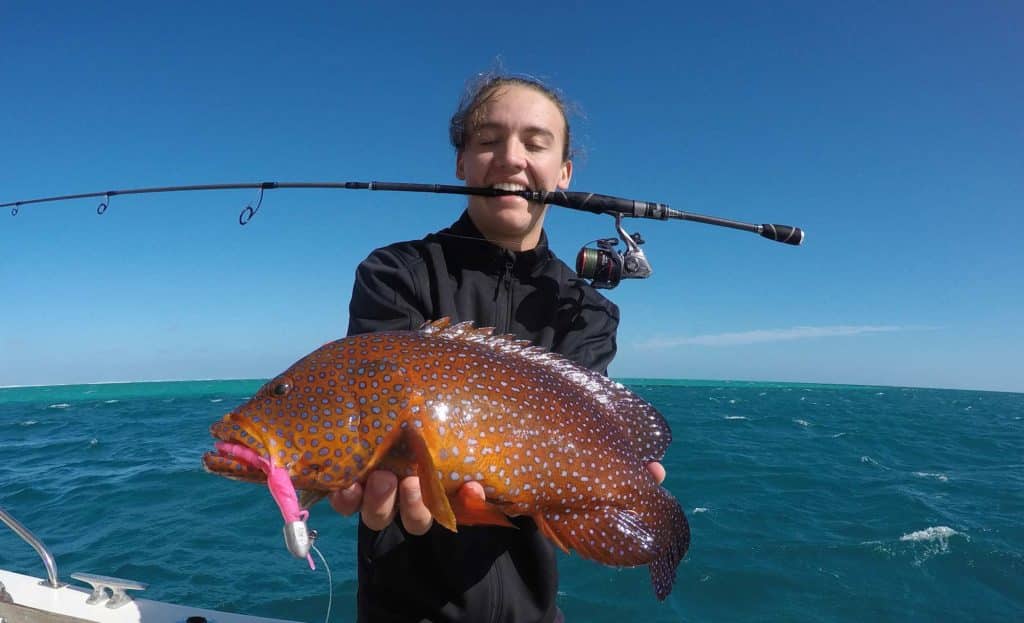
The mix of tropical and temperate waters here means that many other species can be taken around these islands. These include the yellowtail kingfish and samson fish (relatives of and similar to amberjack), red emperor (Lutjanus sebae, a beautiful, large true snapper), shark mackerel, trevallies, spangled emperor (a long-nosed reef fish not related to snappers), groupers such as Rankin cod, tailor (Oz-speak for bluefish) and others. Those who are able to venture out to blue water can find yellowfin tuna, marlin (blues, blacks, stripes), sailfish and wahoo.
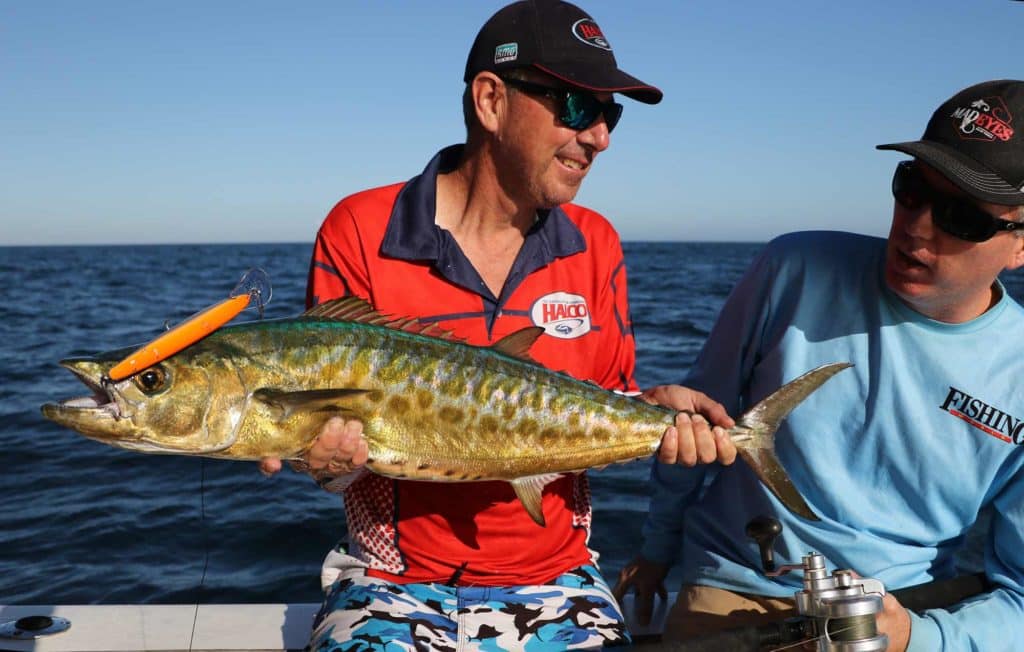
Carpet Python, Mutton Birds and Squid
Speaking of tailor, they became the target of a rock-fishing adventure one morning when we all climbed into Mandalay‘s little dinghy and motored to the shallows off a beach on West Wallaby Island. From there, we hiked 20 or so minutes to a stark, picturesque shoreline in the lee of the hard breeze to cast to tailor, which we found in their usual aggressive feeding mode.
During the hike back, we chanced upon an 8-foot carpet python coiled in the morning sun to warm up in the overnight chill, an impressive, beautiful serpent.
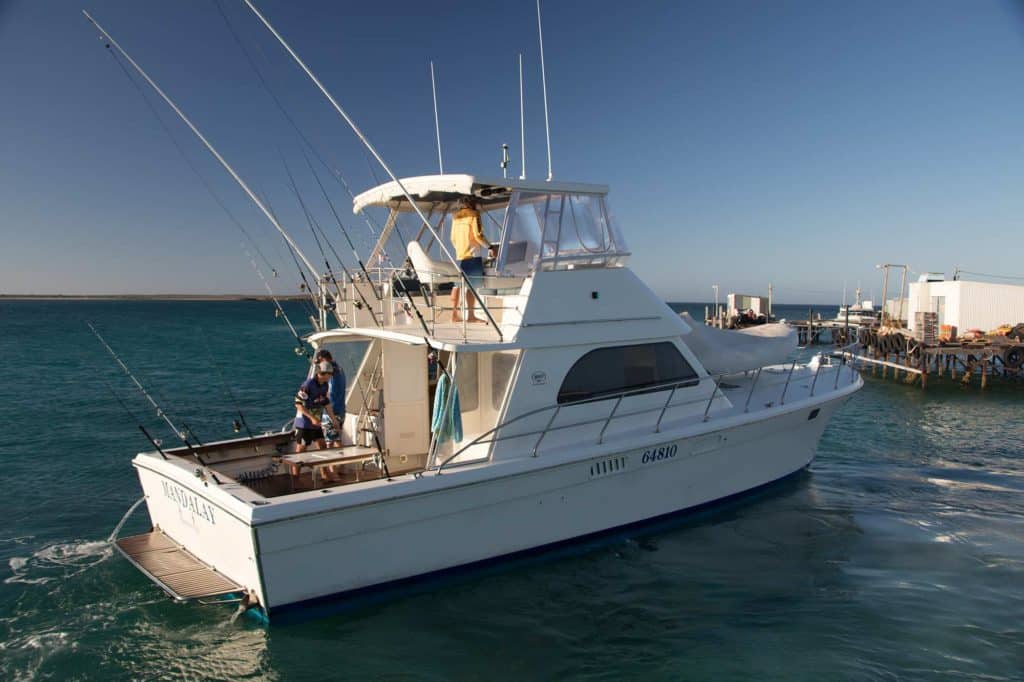
We tied up next to Pigeon Island for the evening. Surprises the next morning included three mutton birds — a type of shearwater determined to live up (or down) to the “birdbrain” tag: They had landed in the boat overnight and, while able to fly, didn’t seem to have any idea how to leave the cockpit until Carter picked them up and tossed them over (and then proceeded to do a major deck washdown).
A more welcome surprise were numerous large, colorful squid cruising back and forth around the boat under the lights until just after daybreak — long enough for us to catch quite a few in anticipation of a calamari feast for dinner.
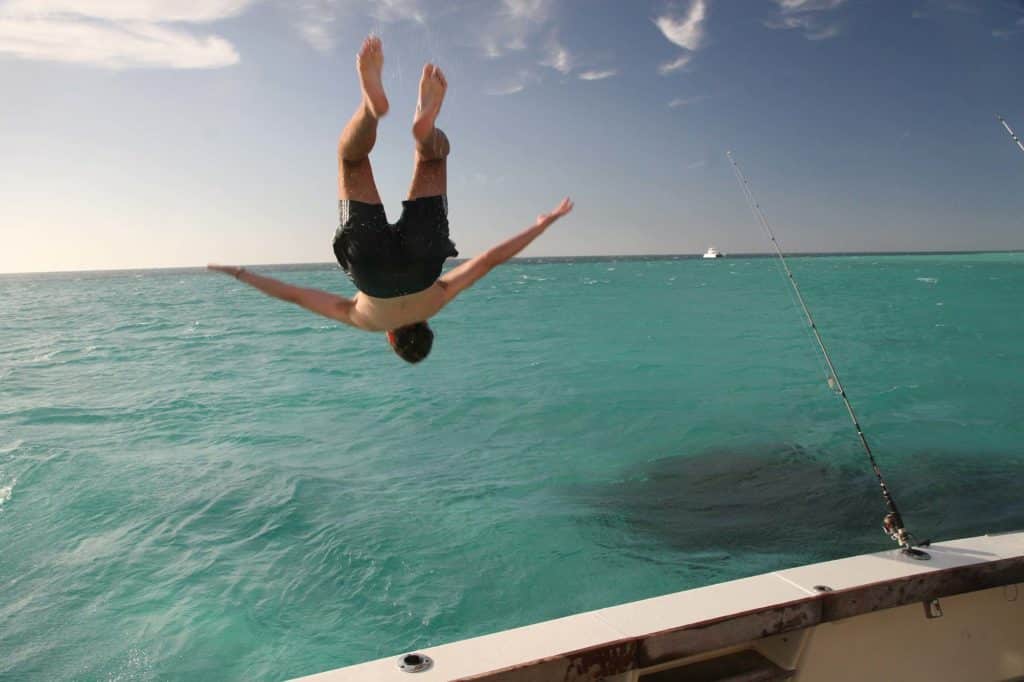
I can only hope to get back to fish the Abrolhos someday when the wind takes a break. That is somewhat more likely during the months of February through June and September/October, though even during the winter months, there might be periods of variable winds in between the year’s fiercest gales. For those wanting to experience this unique fishery, Carter recommends Blue Lightning Fishing Charters’ liveaboard trips in the Abrolhos starting in January and running into June.
Even limited by conditions as we were, I would say that anyone lucky enough to visit and fish the Abrolhos Islands will remember experiencing a part of Australia that few anglers from this continent or any other ever get to see.
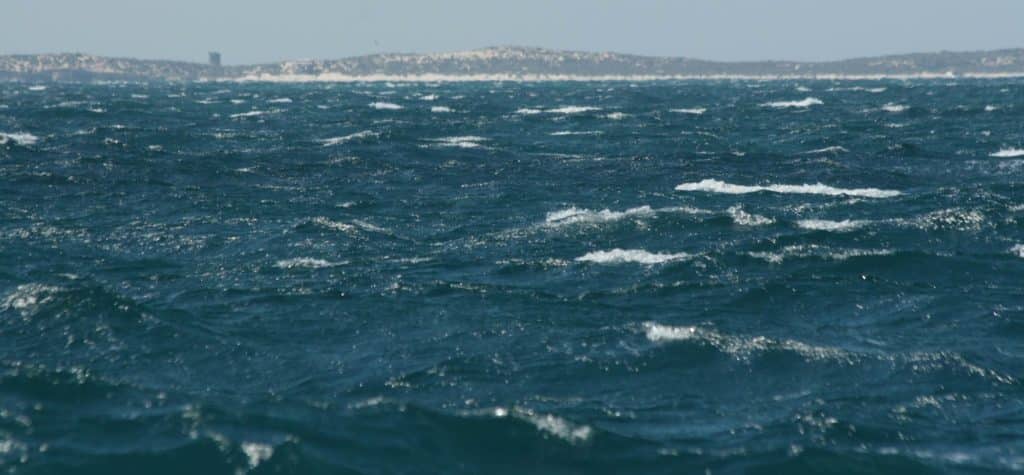
Five Stars Ease the Angst of Long Flights
Flying from Florida to Perth is no small undertaking, requiring close to a day and a half of flight and airport time. Cathay Pacific flew me from Chicago to Perth with only one stop (in Hong Kong). Besides appreciating the surprisingly few flights needed, I was interested to fly to Oz on an airline that consistently receives the highest rating (five stars) on Skytrax, an airline-review site I’ve used for years. After my flights on Cathay Pacific, I could understand all the positive reviews. The airline is hard to beat for anyone flying Pacific routes.

Where Lures Come From
A slogan like “Halco lures: Designed by Fishermen for Fishermen” came to mind the morning I watched Ben Patrick don snorkeling gear and tumble off the transom of his anchored sport-fisher. Tim Carter began casting and retrieving a small red-and-white lure just in front of Patrick, whose head swiveled as he watched it go by. Patrick made careful observations of how this prototypical Trembler 70 swam; anything less than perfect would require some tweaking back at Halco HQ in Perth before Patrick would add the lure to the Halco line.

